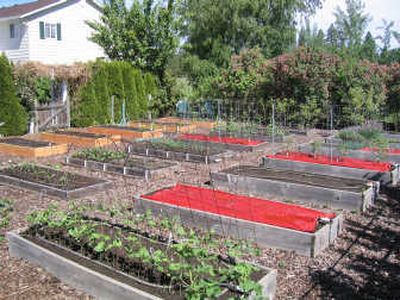Think your garden’s ready? Test your soil

Proper soil preparation is the foundation of a successful garden. Because vegetable plants are heavy feeders, it is important to replenish the soil annually in addition to adding organic materials to improve the soil’s air circulation and moisture retention.
After the winter we’ve had, gardeners are champing at the bit to head outdoors and get that garden going. The biggest danger is working with the soil when it is still too wet. This completely changes the soil’s composition, which can turn your garden into a mass of small dirt clods. Here’s how to test your soil to know if the time is right:
Grab a handful of soil, form it into a ball and squeeze it. If it feels wet, it’s still too early. If it isn’t wet, poke a finger into the ball and if it easily breaks apart, it’s time to prepare the soil.
In addition to providing nutrients, organic materials can help lighten up heavy clay soils or provide some substance to sandy soils. When your soil is ready to be worked, add organic ingredients like peat moss, shredded leaves, compost, composted steer manure or grass clippings from lawns that haven’t been treated with a “weed and feed” product.
While preparing your garden, keep in mind that root crops should not be planted in soils high in nitrogen. For example, carrots and parsnips will develop forked roots if the soil contains too much nitrogen from amendments like fresh manure. This is a good reason to start with a plan so you can go easy on the nutrients where those crops will be planted.
During the growing season, it is very important to avoid compacting the soil around plant roots by walking right next to them. This impedes the movement of water and nutrients up through the roots so plan your garden with wide enough paths between the rows.
Mulching the soil surface inhibits weeds and retains soil moisture. Good mulch materials include grass clippings from an untreated lawn, pine needles, peat moss, bark, sheets of newsprint, or straw that doesn’t contain weed seeds.
Landscape fabrics – sometimes referred to as weed-block – provide excellent weed control. I use them in the aisles between my raised beds and cover them with bark mulch. This way I only have to weed the top of the beds.
I also use plastic mulches to increase the soil temperature for warm-season crops like tomatoes and melons. Granted, they aren’t very aesthetically pleasing but research has shown that using red or green plastic increases yields by about 30 percent. When using any type of plastic sheeting, you will need to place a soaker hose or drip irrigation hose underneath it since the plastic will prevent water from getting to the plants’ roots.
Watering is another key component to keeping your garden soil productive because it helps nutrients get from the soil to plant roots. Soaker hoses keep water at the soil level which directs moisture right to the roots where it’s needed. Overhead watering is wasteful because of evaporation and can also shock a plant when cold water hits the leaves.
Our watering system is on a timer to save us time. Early in the season, the garden only needs to be watered every few days but once the temperatures warm up, it gets watered for 15 to 25 minutes daily. The best time of day to water is early morning. Be sure to water regularly and monitor the moisture in the soil.